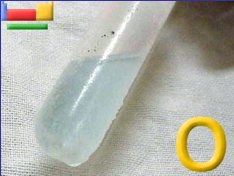|
|
|
|
|
Nitrogen makes up
about 78% of the atmosphere by volume but the atmosphere of Mars contains
less than 3% nitrogen. The element seemed so inert that Lavoisier named it
azote, meaning "without life". However, its compounds are vital
components of foods, fertilizers, and explosives. Nitrogen gas is colorless,
odorless, and generally inert. As a liquid it is also colorless and odorless.
|
|
It was known during the 18th century that air contains
at least two gases, one of which supports combustion and life, and the other
of which does not. Nitrogen was discovered by Daniel Rutherford in 1772, who
called it noxious air, but Scheele, Cavendish, Priestley, and others at about
the same time studied "burnt" or "dephlogisticated" air,
as air without oxygen was then called.
|
|
|
|
While about one fifth of the atmosphere is oxygen
gas, the atmosphere of Mars contains only about 0.15% oxygen. Oxygen is the
third most abundant element found in the sun, and it plays a part in the
carbon-nitrogen cycle, one process responsible for stellar energy production.
Oxygen in excited states is responsible for the bright red and yellow-green
colors of the aurora. About two thirds of the human body, and nine tenths of
water, is oxygen. The gas is colorless, odorless, and tasteless. Liquid and
solid oxygen are pale blue (see picture above) and strongly paramagnetic
(contains unpaired electrons).
|
|
Oxygen is very reactive and oxides of most elements
are known. It is essential for respiration of all plants and animals and for
most types of combustion.
|
|
Leonardo da Vinci suggested that air consists of at
least two different gases. Before then, air was felt to be an element in its
own right. He was also aware that one of these gases supported both flames
and life. Oxygen was prepared by several workers before 1772 but these
workers did not recognize it as an element. Joseph Priestley is generally
credited with its discovery (who made oxygen by heating lead or mercury
oxides), but Carl Wilhelm Scheele also reported it independently.
|
|
The behavior of oxygen and
nitrogen as components of air led to the advancement of the phlogiston theory
of combustion, which influenced chemists for a century or so, and which
delayed an understanding of the nature of air for many years.
|
|
|
|
Ozone (O3)
is another allotrope of oxygen. It is formed from electrical discharges or
ultraviolet light acting on O2. It is an important component of
the atmosphere (in total amounting to the equivalent of a layer about 3 mm
thick at ordinary pressures and temperatures) which is vital in preventing
harmful ultraviolet rays of the sun from reaching the earth's surface. Undiluted ozone is bluish in color.
Liquid ozone is bluish-black, and solid ozone is violet-black.
|
|
|
|
|

